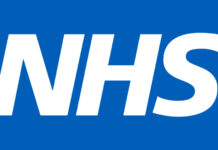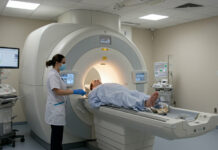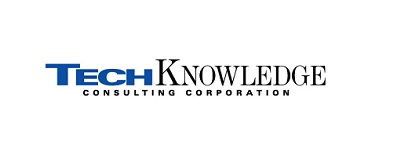In an age of Information-Based Healthcare, a strong, secure wireless network is an essential part of delivering quality healthcare, improving patient safety and enhancing the patient’s experience. Like an EMR rollout, it won’t happen overnight and there are likely to be some bumps along the way, but every healthcare institution should be charting their wireless strategy with an eye on the demands of tomorrow.
Every hospital in America is racing toward a full rollout of Electronic Medical Records (EMR), eager to reap the benefits of “anything anywhere” information at their fingertips. Some, however, are bumping into an unexpected and potentially expensive barrier along the way: older networks, and wireless networks in particular, are often choking under the burden of EMR and its associated images. What’s needed to support a full EMR rollout? Is a wireless network sufficiently secure to deliver Protected Health Information (PHI)? And how can the needs of clinicians be prioritized over a guest playing a game on an iPad? Thankfully, there are relatively straight forward answers to these questions in today’s wireless environment.
Healthcare Historically Slow to Adopt Wireless Rollout
Historically, the healthcare industry has been slower to adopt the 802.11 (“WiFi”) networks than their corporate peers. Why is that? First, many devices, such as telemetry, communicated over their own proprietary network provided by the telemetry manufacturer. With critical care mobile networks already in place, most hospitals were slow to add 802.11 wireless networks. In addition, the BioMed and Telemetry manufacturers have been very slow to jump on the WiFi bandwagon, preferring to sell and manage a proprietary wireless network. Second, and perhaps more importantly, Healthcare IT professionals were understandably reluctant to expose PHI to a wireless network that offered limited management and security tools. While early WiFi networks could be configured to be HIPAA compliant, most IT professionals were uncomfortable with the level of security and simply opted to wait for better wireless network products. Third, early wireless antennas (technically known as Access Points) had to compete with crowded cable raceways, ceiling space and early devices required electrical power for each antenna, making the sheer logistics of installation difficult and expensive.
Wireless Comes of Age in Healthcare
The last 36 months have ushered in tremendous progress in the wireless world, with marked advances in security, performance, and the ease of installation. 802.11n is now the defacto standard for healthcare networks, and the speed and security of the network now rival those of traditional wired networks. As a result, the telemetry and BioMed vendors have finally embraced 802.11n as the preferred method of connection. While the older telemetry networks and 802.11 WiFi devices will likely coexist for a significant period of time, new installations using WiFi networks are easier and more cost-effective.
In the same timeframe, the entire telecommunications industry has standardized on Voice over IP (VoIP), and telephone systems, nurse calls, and even cell phones such as an iPhone or a Blackberry can participate on a WiFi network. For instance, WiFi capable phones can now be linked to a nurse call system, reducing the need for overhead paging. Similarly, a well-configured wireless network can now accommodate wireless data, telemetry, telephone calls, and patient Internet access. Although Computers on Wheels (COWs) continue to be the primary consumer of wireless networks in hospitals, newer, high quality handhelds promise to add even more wireless devices at the point of care. Over time, fewer and fewer devices will be “tethered” to a wired connection. Many experts, including TechKnowledge, believe the demand for wired connections in healthcare has peaked, reducing the need for dozens of cabling outlets in every patient space.
A number of major advances in the WiFi networks have made all of this possible and developments continue at breakneck pace. Overall, wireless components are smarter, more capable and more affordable. Access points no longer require electrical power in the ceiling and are easier to place and maintain. Access points now include multiple radios and multiple channels and, when paired with an intelligent wireless controller, can distinguish and prioritize bandwidth. For example, clinical EMR users would have a dedicated, prioritized, secure network to use without the risk of compromise from a patient playing videos on an iPad. Controllers can detect congestion and re-direct traffic to adjacent Access Points, ensuring a consistent quality of service. Controllers can also detect unauthorized users and unauthorized Access Points. That’s an important change, as three years ago fewer than 25% of patients and visiting family carried a WiFi capable device but these days the vast majority have a WiFi capable phone or gaming device, threatening to congest older unmanaged wireless networks.
What’s next in Wireless?
Like most new technologies, competing solutions are on the market and it’s not entirely clear which ones will survive over the long haul. There are three trends to watch:
Distributed Antenna Systems – Rather than maintaining a wireless network for WiFi, another one for telemetry, a distinct network of repeaters for in-house security or maintenance RF radios, Distributed Antenna Systems hold the promise of a single master solution for all a hospital’s wireless needs. Vendors such as Mobile Access and Innerwireless provide Distributed Antenna Systems worth considering.
4G and WiMax – Many cellular providers are already deploying “next generation” technologies in their networks and some believe technologies such as WiMax (currently offered by providers such as Sprint and Clear Wireless) will eclipse 802.11 for in-building wireless over time. The jury is still out, however, as the economics of a carrier- provided offering are unattractive at present. It is also unclear if BioMed and other technology vendors will quickly adopt WiMax for in building solutions before 2015.
Exponential Increases in Demand – One thing is clear: the more that people have the more they want in terms of wireless. Healthcare professionals should expect their devices at the point of care to be at least as capable as their iPhone: why shouldn’t they expect high quality video at the point of care? Other devices, such as security video, will soon enter the fray, creating dramatic increases in the demand for bandwidth and the need to carefully manage wireless networks.
In an age of Information-Based Healthcare, a strong, secure wireless network is an essential part of delivering quality healthcare, improving patient safety and enhancing the patient’s experience. Like an EMR rollout, it won’t happen overnight and there are likely to be some bumps along the way, but every healthcare institution should be charting their wireless strategy with an eye on the demands of tomorrow.


















